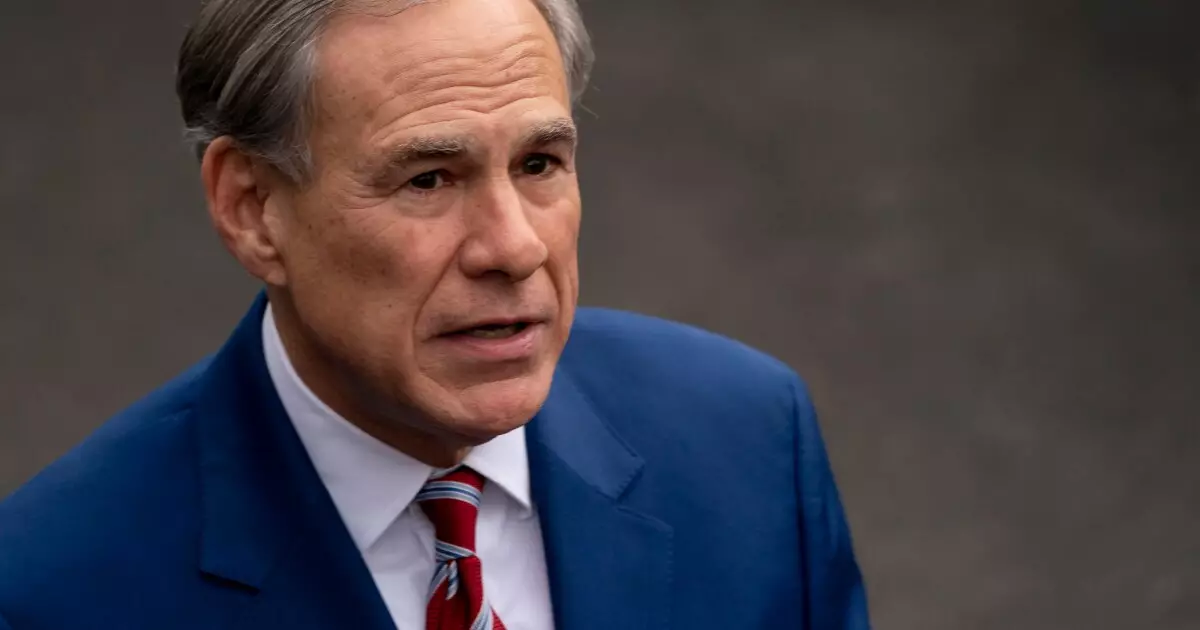Water scarcity is rapidly emerging as one of the most pressing issues in the Southwestern United States, particularly as states like Texas and New Mexico grapple with extreme drought conditions and an ever-growing population. In stark contrast, while innovative proposals and funding initiatives suggest proactive measures, existing challenges raise profound questions about sustainability and long-term solutions. This article examines recent legislative initiatives from Texas and its neighbors while providing a critical analysis of how states are positioning themselves to confront severe water shortages exacerbated by climate change.
Texas Governor Greg Abbott’s recent State of the State address clearly underscored water management as an “emergency item,” demonstrating its prioritization in state governance. Abbott proposed an ambitious investment plan involving $1 billion annually for ten years, which he claims would ensure an adequate water supply for the next five decades. His commitment to enhance water infrastructure forms a response to an acute shortage—an issue highlighted by reports indicating that parts of Texas may require nearly $200 billion in water-related investments.
The governor’s initiatives, including plans for desalination and leveraging Houston’s excess water for drought-stricken areas, present an expansive vision. However, one must interrogate the feasibility of these actions in practice. Infrastructure projects often encounter obstacles such as environmental regulations, local resistance, and significant funding gaps. Although Abbott’s rhetoric posits a historical investment, the success of such plans rests heavily on bipartisan cooperation and effective execution, both of which remain uncertain.
Alongside Texas, New Mexico is exploring water solutions that involve treating brackish water from aquifers, specifically used for addressing industrial needs and firefighting efforts. Governor Michelle Lujan Grisham has actively promoted legislation intended to create a framework for grants aimed at local water systems. With an allocation of just over $100 million from a proposed fee on water produced from oil and gas wells, this initiative is promising yet insufficient when considered against the broader challenges facing the state as it confronts severe water shortages.
Despite enthusiasm around innovative methods for augmenting water supplies, previous failed initiatives, such as the governor’s proposed plan at the UN Climate Change Conference, raise concerns about consistency in policy and the state’s commitment to tackling its water crisis. The need for efficient allocation of resources and sustained political will is crucial for any long-term impact emerging from these strategies.
Similarly, Governor Laura Kelly of Kansas has sounded the alarm regarding dwindling water supplies, proposing a $30 million boost to protect the state’s vital resources. Her urgent message highlights regions in Kansas that may not have sufficient groundwater to sustain agriculture, which serves as the backbone of its economy. The narrative of immediate crisis presented by Governor Kelly starkly contrasts with proposed long-term solutions of other Southwestern states, suggesting a need for balancing immediate relief measures with sustainable long-term strategies.
The proposed funding increase offers a temporary solution, yet it is critical for policymakers to consider how it fits within a larger framework. Can Kansas effectively leverage this funding to create a resilient water management strategy, or will it merely serve as a stopgap? The answer will demand tactful union of short-term measures with enduring strategies towards comprehensive water management.
In Arizona, the ongoing budget constraints have stymied the state’s ability to invest in new water infrastructure, lessening the existing long-term water augmentation fund set up under previous Republican leadership. Governor Katie Hobbs has called for a renewed focus on securing water futures, yet the lack of funds in the proposed budget highlights serious shortcomings in the state’s proactive measures. Critics argue that political infighting creates setbacks in the establishment of sustainable solutions.
The struggles Arizona faces depict a broader narrative in the Southwest where immediate fiscal challenges continue to overshadow the long-term needs for policy reform and infrastructure improvements. The state’s commitment to invest judiciously once fiscal conditions allow is a positive development. However, time is of the essence; every year without substantial water provision measures hinders regions that depend heavily on agriculture and tourism.
As the Southwestern United States faces an imminent water crisis, the discussions among Texas, New Mexico, Kansas, and Arizona illustrate both the potential and pitfalls of addressing water scarcity. State leaders have proposed transformative water strategies that could redefine how water resources are managed. However, the effectiveness of these measures is contingent upon sustained political will, innovative funding models, and an inclusive approach that considers the needs of diverse communities across the states.
The pressing reality of water shortages necessitates a collaborative framework that not only embraces ambitious propositions but also emphasizes accountability and practicality. Future actions must prioritize both immediate relief and the establishment of comprehensive plans that ensure water resilience for generations to come. Without such a dual approach, the hopes of securing sustainable water supply could wither away, leaving the Southwest scrambling to quench its persistent thirst.


Leave a Reply